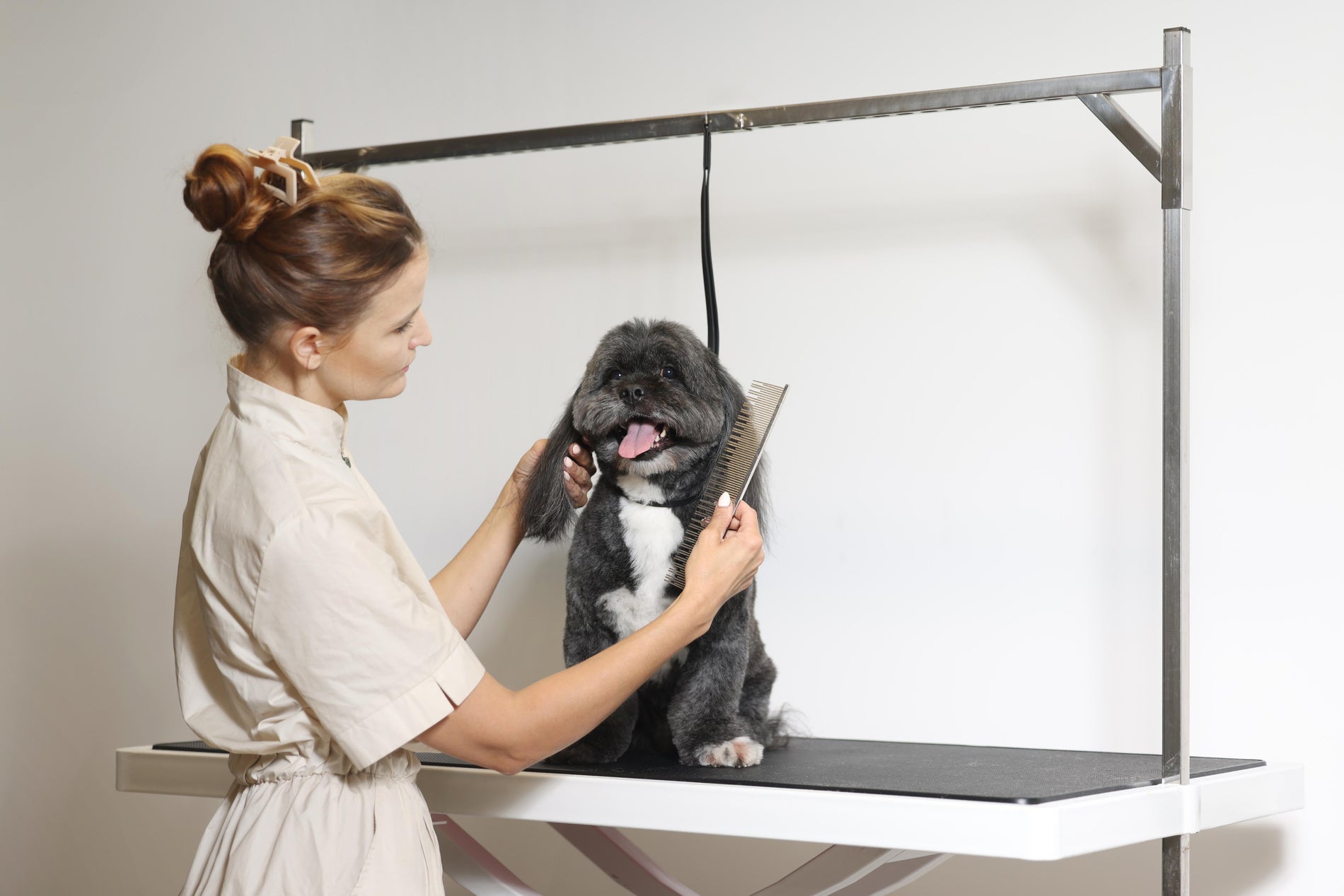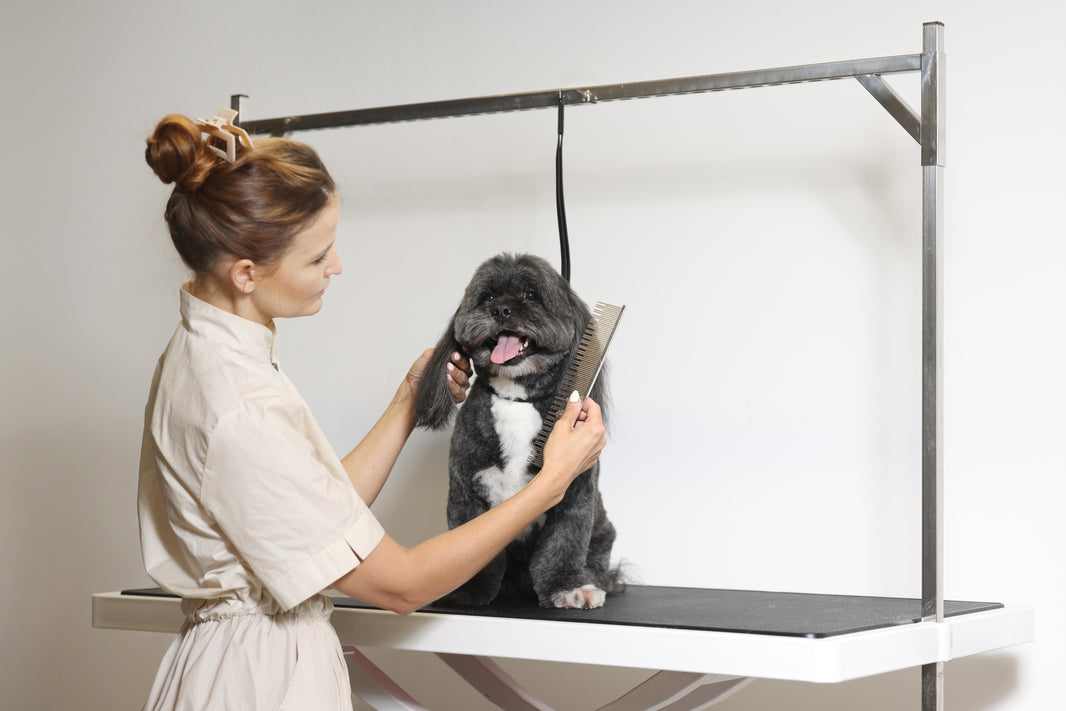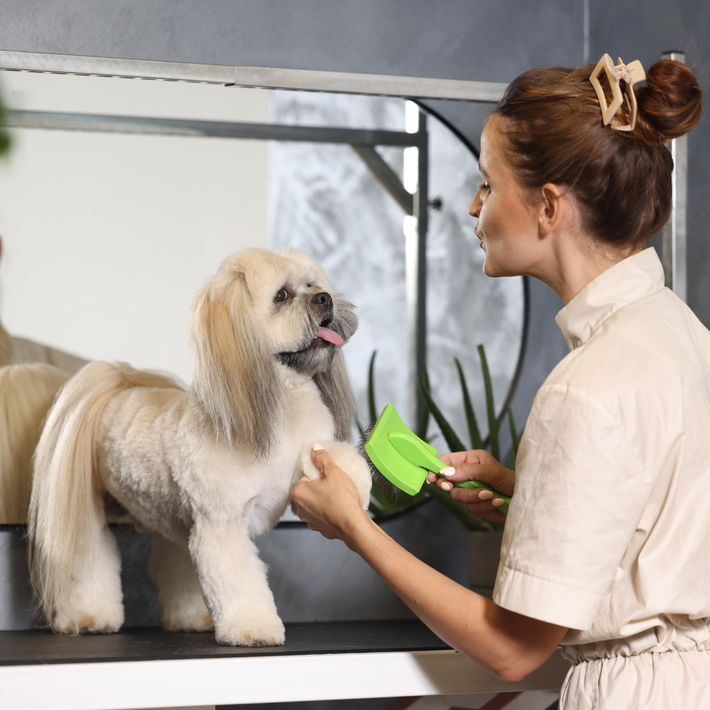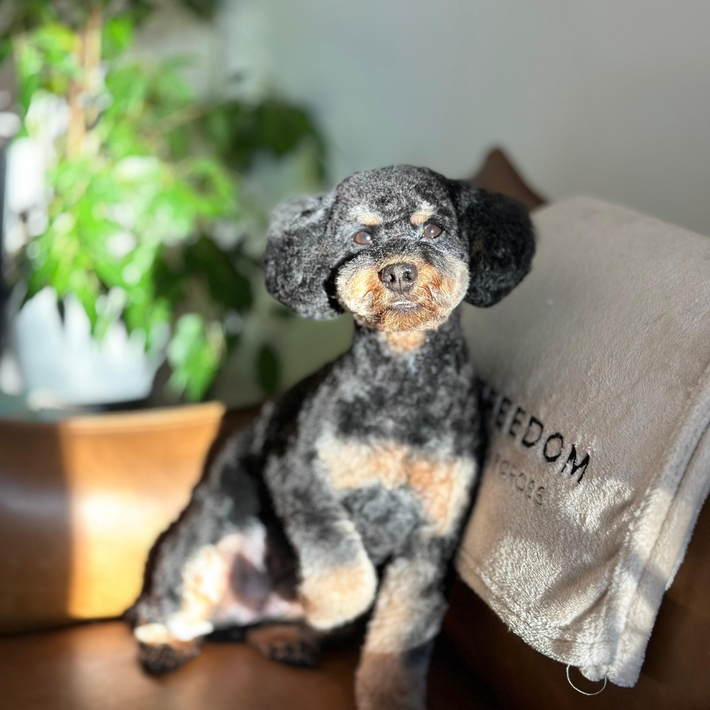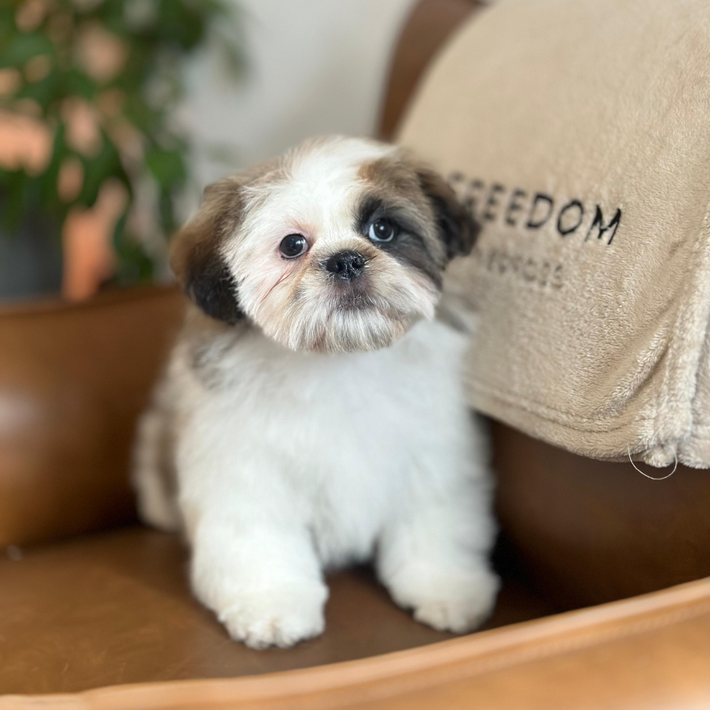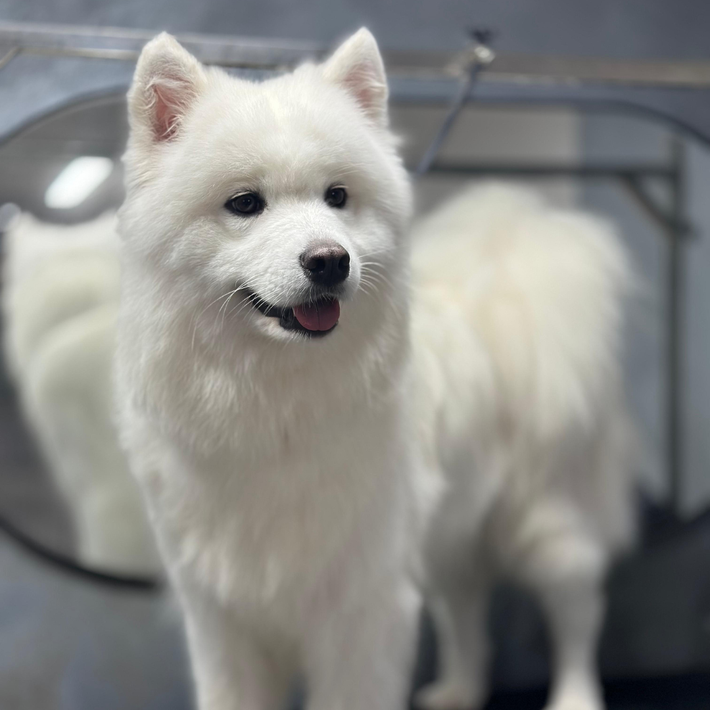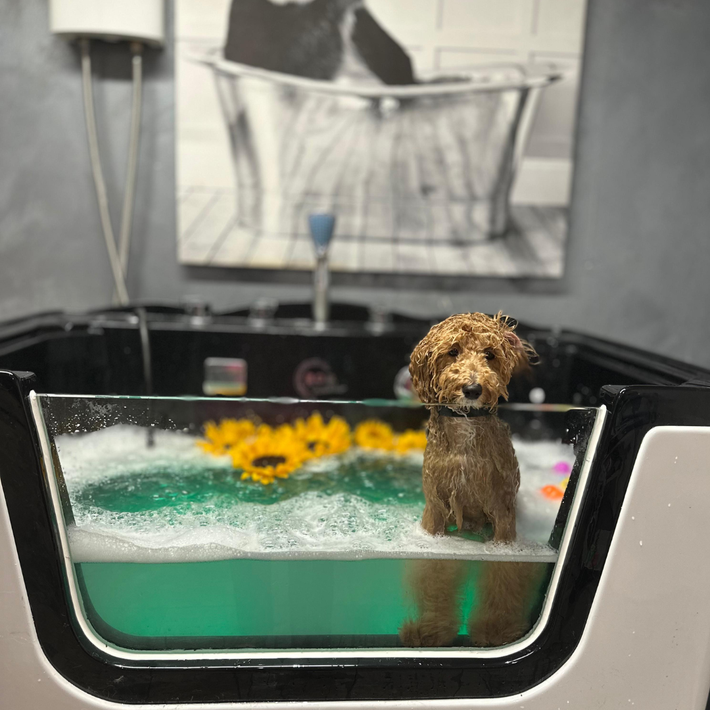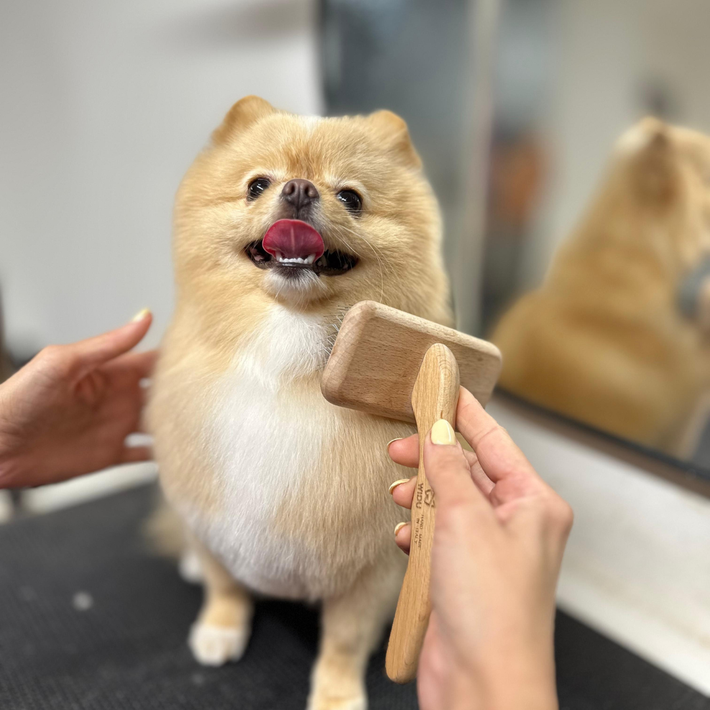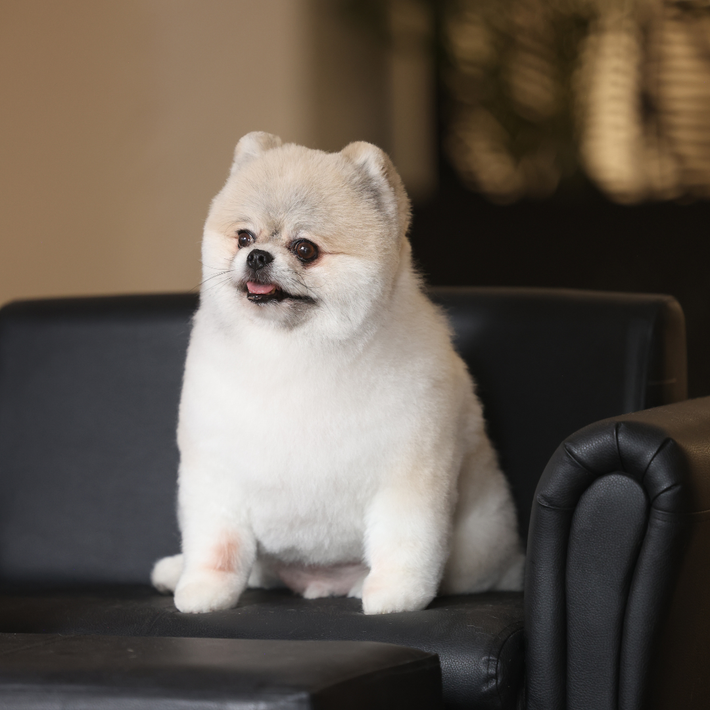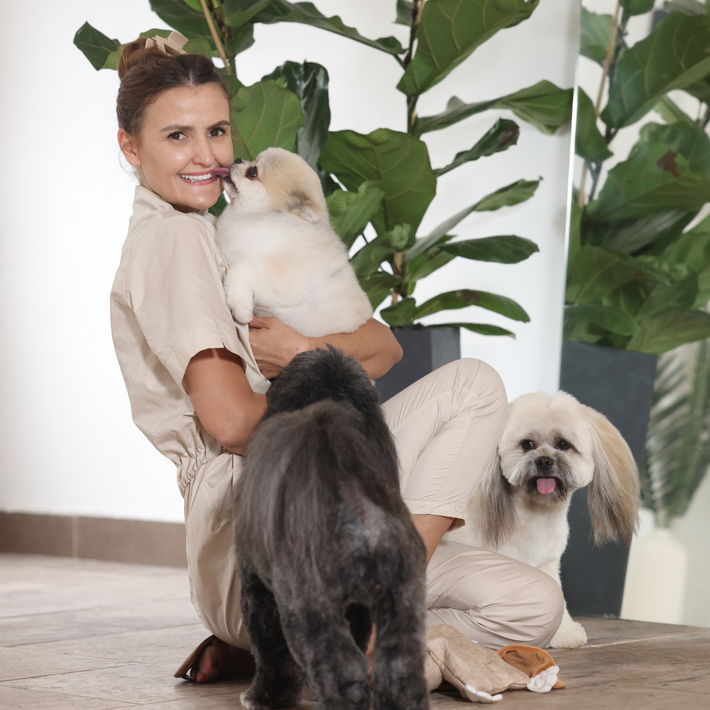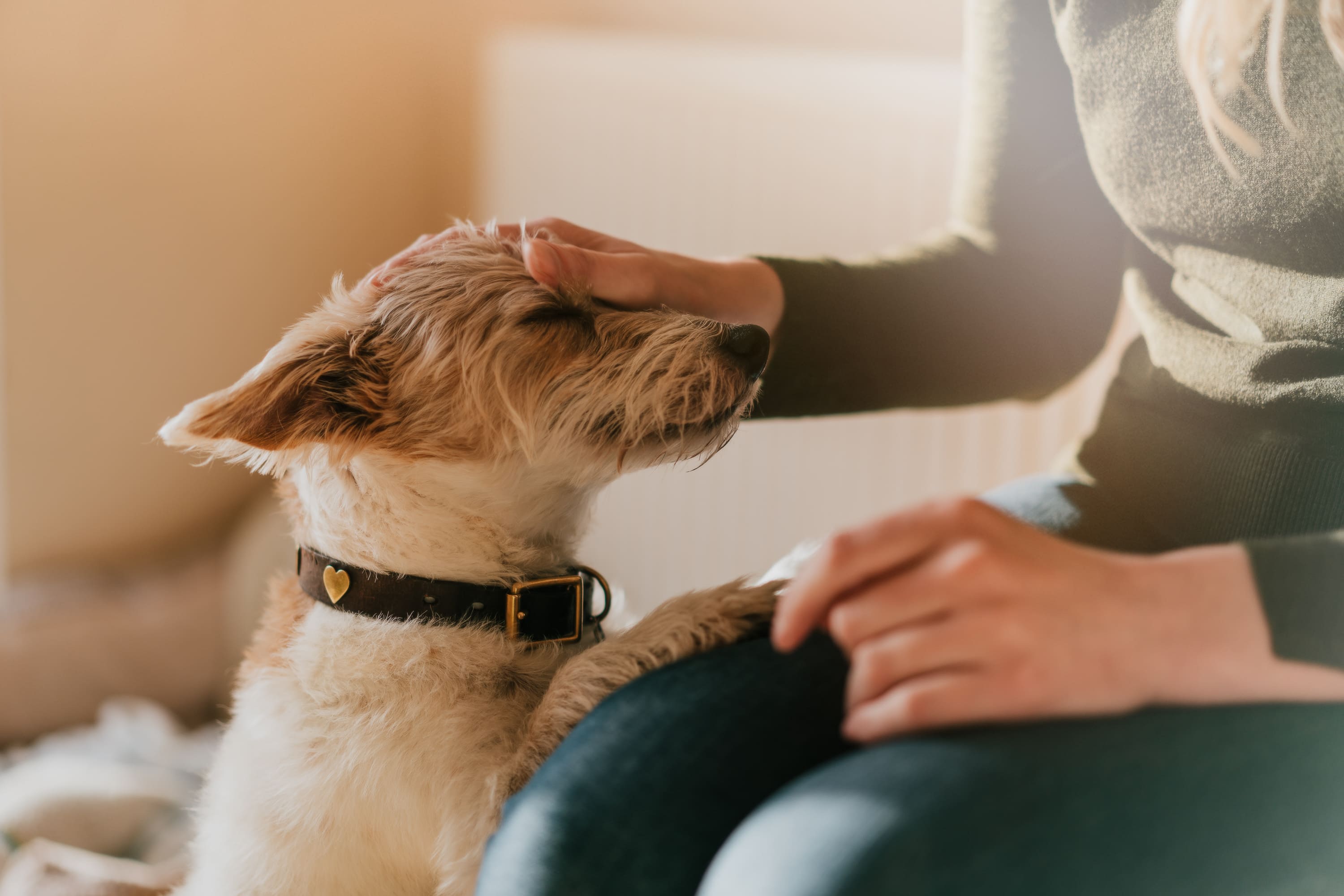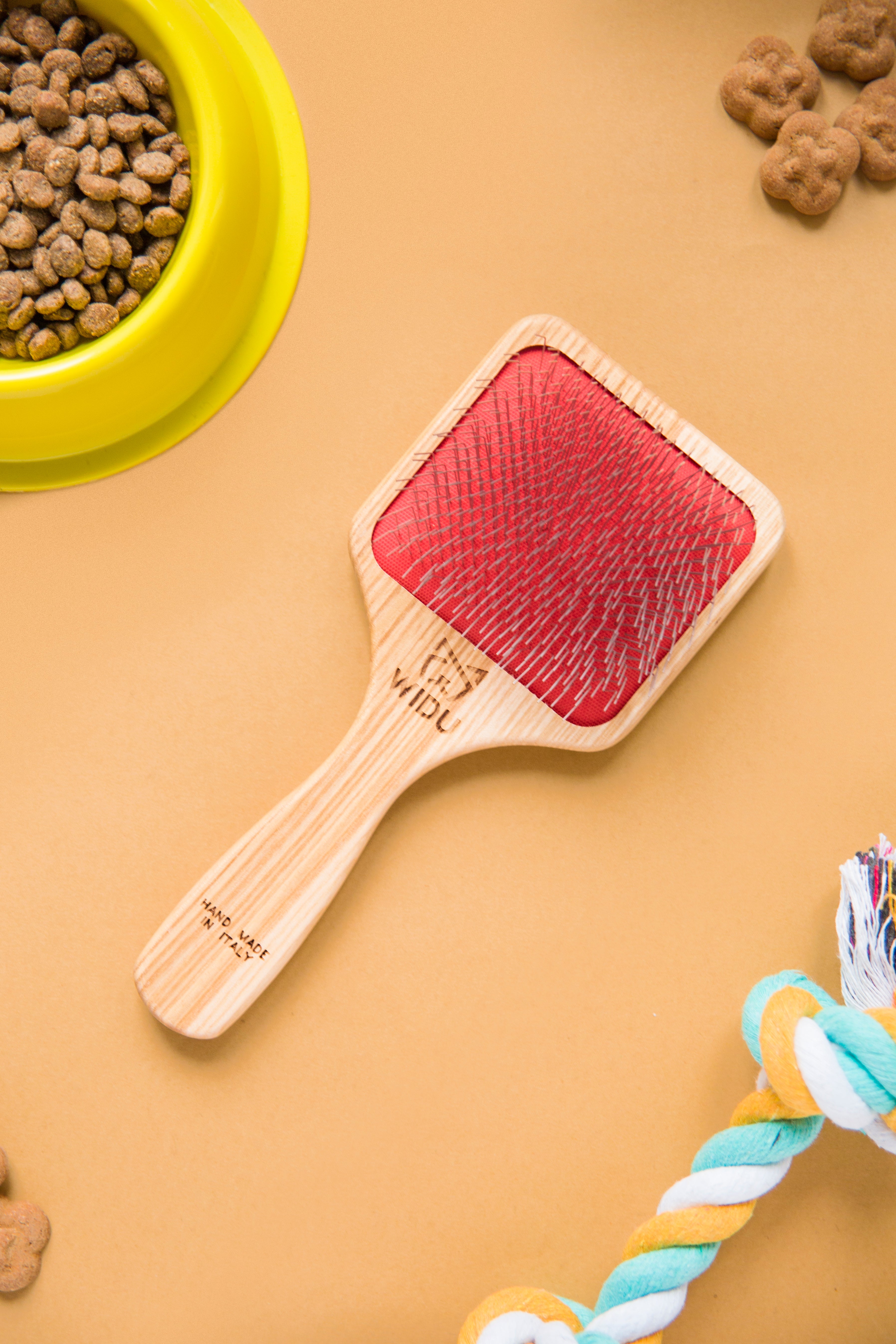Grooming is an essential part of your pet’s care, playing an important role in their health and well-being. As a vet, I encourage owners to start grooming their dogs from a young age, using plenty of positive reinforcement. While there are some things that you may want to have a professional groomer do, there are still plenty of things you should be doing at home.
Positive reinforcement training
In a nutshell, positive reinforcement is the process of rewarding ‘good’ behaviours to encourage your dog to repeat them in the future. This should be a gradual process, getting your dog happy with each step before moving on to the next. Praise, treats, and toys are all good motivators. This type of training should start from a young age, but it can be useful in older dogs too.
Positive reinforcement should be used in all aspects of grooming, but nail clipping is a good example. It may go something like this –
- Start by showing them the clippers, giving them a treat for being near or sniffing them.
- Next, touch the clippers against your dog’s paw, rewarding them.
- If they are happy, then hold your dog’s paw and place the clippers against a nail, rewarding a calm reaction.
- Clip a nail, rewarding your pet so they build a positive association with the process.
If your dog is stressed at any point, stop and take a break. How quickly you progress through the various steps will depend on your dog’s personality and any previous negative experiences. It could be a matter of hours or days for some dogs, while others could take weeks.
You must never use aversive training methods with your dog. If you shout or punish them, you will only make them even more anxious about grooming next time
Bathing your dog
Most dogs only need bathing when they are particularly dirty or smelly. Bathing them too often can strip their coat of natural oils. To make bath time a success –
● Use a dog-specific shampoo. Human products or dish soap could be too harsh on their skin.
● Make sure the water is a comfortable temperature.
● High-pressure shower heads can scare some dogs, so use a cup or jug to slowly pour water instead.
● Use a non-slip mat in the bathtub so that your dog feels secure.
Brushing your dog
Some dogs may need brushing nearly every day, whereas for others, once a week is fine. The best dog brush for shedding will also depend on their coat type. Generally –
● Smooth coats = A bristle brush, rubber brush, or grooming glove works well
● Curly coats = the best comb for poodles and other curly-coated breeds is a metal comb, though you may want to use a slicker brush alongside this
● Thick or long coats = Try using a slicker brush, pin brush, or de-matting tool
But speak to your local pet store or groomer if you need advice.
Clipping and trimming your dog’s coat
The right grooming tools for dogs will again depend on their coat type. Some breeds will need regular all-over clipping, whereas others only need a light scissor trim to keep their feathery bits neat. It is possible to do this yourself at home, but a professional groomer is usually recommended, especially if you are not confident or have a particular look you want to achieve. The main points for stress-free clipping are –
● Avoid using clippers for extended periods; they could become too hot and cause burns.
● Don’t put too much pressure on the clippers, as this could cause nicks and clipper rash.
● Invest in a good quality pair of clippers or scissors. Keep them clean and oiled.
Claw trimming
As well as positive association training, here are some other nail trimming tips –
● Pick a quiet time when your dog is calm.
● A second person can be helpful to hold your dog for you.
● Avoid cutting the sensitive quick towards the nail base, which can be seen in light coloured claws.
● Trim your pet’s nails little and often to keep things in check.
● Make sure your clippers are sturdy and fit for purpose.
● Never copy social media videos by putting peanut butter on your forehead for your dog to lick while you are trimming. Dogs can bite when anxious or accidentally hurt. Use a lick mat for distraction instead.
The importance of regular grooming
Regular grooming not only helps your dog look their best but stops health issues from developing too. Matted fur and overgrown claws can be uncomfortable, contribute to infections, and affect mobility. Also, by spending time carefully grooming your dog, you will be able to spot problems early on. Many owners spot a new lump, dental disease, parasites, or skin irritations while grooming their pets.
If you have any concerns about your pet’s health or you are struggling with grooming, then speak to your vet for advice.

